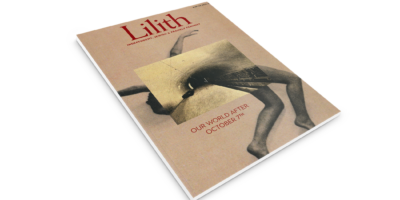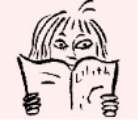
My Return to Jewish Culture
Last March, I attended the first PRISM gathering, a convening for Jewish artists of color. At this point, we had been locked into pandemic screen time for a year. My Zoom fatigue was becoming more and more pronounced, leading to feelings of disengagement when online. But that night, I was engaged in a way that made my fingertips tingle. My body was alive to the possibilities of each and every one of the sixty or so participants that were sharing this virtual space.
Looking at my computer screen, I felt a sense of deep awe. On the other side of the screen were the faces of fellow Jews of diverse backgrounds—Mixed-race Jews, Black Jews, Yemini, Indian, Ethiopian, South American Jews…the list goes on. This was not just a space for Jews from different backgrounds to come together, this was a space for fellow artists, creatives and art workers to connect and start to build community. I felt so seen.
Even as a child, I was acutely aware that we might never be British enough, or white enough, or Ashkenazi enough, or Indian enough.
It had taken me years to return to my Jewish roots. I grew up in an Ashkenazi community in Northern England. My father’s ancestry is Eastern European, and my mother was born in Mumbai, a daughter of the Bene Israel community. My mother, with her brown skin and heavy accent, tried her best to adapt, to become British. But I always grew up with the impression that we were different— not in a good way. The kind of different that makes you always wonder about yourself and your claim to a people or a place or a history. All the forces of assimilation were enacted upon us. Racism was overt but also hidden and harder to name, especially when coming from within your own community. Even as a child, I was acutely aware that we might never be British enough, or white enough, or Ashekanzi enough, or Indian enough. I was a drifter between cultural identities, often performing culture rather than truly feeling part of it.
My upbringing was what some would consider “very Jewish”: I went to a Jewish primary school, had a Bat Mitzvah, went to shul, experienced the horrors of Hebrew school and so forth. When exchanging memories of preteen life with a friend recently, I recounted how I once got in trouble for organizing my fellow rebels in our Jewish youth group to sneak out the back door for fish and chips. We ate these fried wonders while singing Wonderwall by Oasis at the top of our lungs. Such was Jewish life in the 90s in Yorkshire. Judaism was the common thread that securely fastened me to people and place, despite the lurking feeling I had of being an “outsider.”
The abrupt break with my Jewish life happened when my brothers, my mother and I moved to Canada. There was much turmoil and upheaval that first year and traumatic events that transpired took many years to recover from. After the very rocky first year in Canada, I obligingly attended High Holiday dinners with extended family— but the sadness of the proceeding events was ever-present. I relegated Jewish life to the category of the past and clumsily pursued my place in Canadian society. The nagging feeling of having left behind or lost something followed me through seasons and years and relationships and communities. It was only after having my son six years ago that I began to take small and tentative steps back to Jewish community. It was not a relationship with God I was seeking to return to. I reached for Jewish culture and traditions —lighting the candles on Shabbat, hearing the Shofar on Rosh Hashanah—signifiers of Jewish life that are ancient, powerful and comforting in their familiarity.
At this time, I started collecting different parts of myself that had been put aside, making space in my life to be English, Indian and Jewish. I’ve spent much of my adult life concerned with issues of representation, advocating for EDI practices in the Toronto arts and culture sector. “Taking up space” “Representation Matters” – these are catchphrases that are oversaturated in the lexicon of Equity, Diversity and Inclusion (EDI). But to be in a space where representation was more than just a theoretical possibility, more than just an ask or a talking point, shifted the ground beneath me. At the PRISM gathering, I saw and heard from people whose voices were, in this space, not marginal, not peripheral. People who identify in the same way I identified: Jewish and artist and person of colour. From our respective homes, experiences, art practices and histories, we were stitched together by our shared love of Jewish culture and a recognition that Jewish culture is for all of us, without exception. That long-standing feeling that flanked me through my childhood of being an outsider in my own cultural context dissipated.
Since then, my writing has since taken on a sense of clarity and confidence. I’m currently completing a manuscript which explores my unique connection to Jewish culture through memoir and creative nonfiction. I no longer search for unspoken permission to partake in the Jewish cultural heritage I inherited. PRISM helped me realize that this is my cultural inheritance to claim, but it is also possible to create a new type of Jewish culture and keep the door wide open in a gesture that says Welcome.
Lishai Peel is a writer and educator living in Hamilton, Ontario. Follow her @lishaip.
The second PRISM online convening for Jewish artists and creatives of Colour will meet on Wednesday, November 17 (5 PM PST, 8 PM EST). PRISM is organized by No Silence on Race, FENTSTER, JQT Vancouver, DNAWORKS and The Workshop. For more information, detailed FAQs, and to register, visit www.nosilenceonrace.ca or www.fentster.org.



